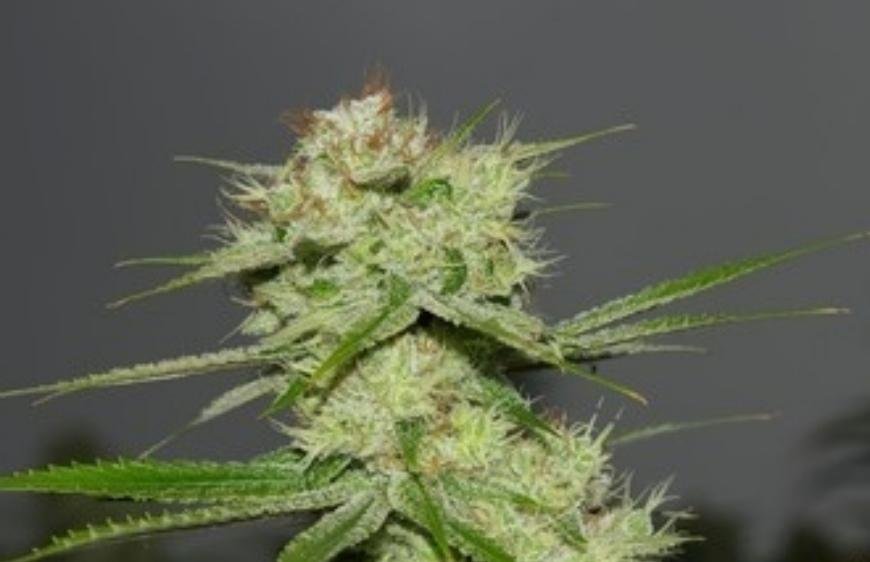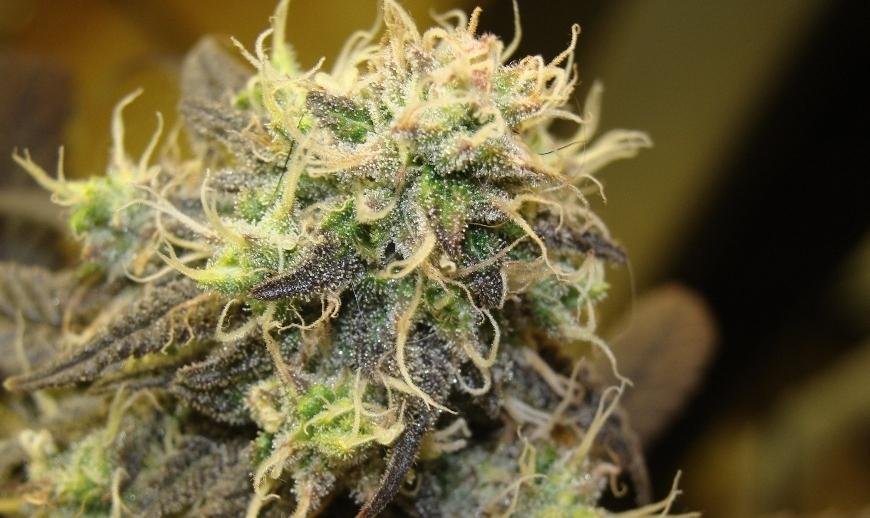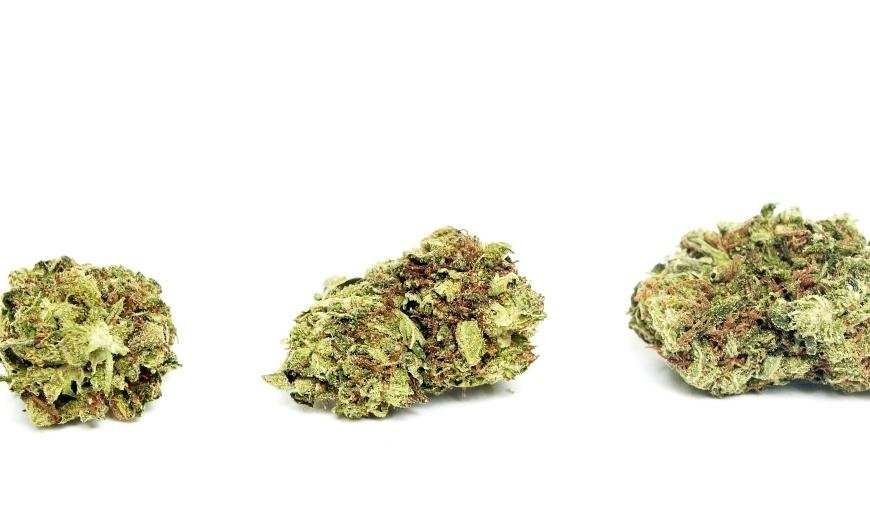Dutch Treat Strain
The dutch treat strain's history, effects, and growing tips in our blog post. Uncover its unique flavors and how to create dutch treat haze!

When it comes to the world of cannabis strains, Dutch Treat is a classic that has been enjoyed by enthusiasts for decades. This indica-dominant hybrid offers a unique combination of effects and flavors, making it a popular choice among recreational users and growers alike.
We will delve into the history and its lineage, exploring its genetics to understand what makes this strain so special. We'll also discuss the growing process for those interested in cultivating their own plants at home.
Furthermore, we'll examine THC, CBD, and other cannabinoid levels present in this strain which contribute to its potency. Additionally, you can expect an analysis of the various effects one may experience when consuming as well as an overview of its distinct flavor profile.
By the end of this post, you will have gained valuable insights into what sets it apart from other strains on the market today – whether you're considering growing it yourself or simply looking to learn more about this remarkable variety.
Table of Contents:
- Overview of Dutch Treat Strain
- History of Dutch Treat Strain
- Growing Dutch Treat Strain
- THC, CBD and other Cannabinoid Levels
- Effects of Dutch Treat Strain
- Flavor of Dutch Treat Strain
- Frequently Asked Questions Dutch Treat Strain
- Conclusion
Overview of Dutch Treat Strain
The Dutch Treat strain is a popular hybrid marijuana strain that has gained widespread recognition for its unique characteristics and effects. This potent cannabis variety offers users an uplifting, euphoric experience while also providing relaxation and stress relief. In this section, we will delve into the various aspects, including its appearance, potency, and popularity among recreational growers and consumers.
It is known for its dense, sticky buds that are often covered in a layer of frosty trichomes. The nugs have a deep green color with hints of purple hues throughout when grown under optimal conditions. The pistils can range from bright orange to rusty reds depending on the specific phenotype.
This hybrid strain typically boasts high THC levels ranging between 18% to 25%, making it quite potent for both experienced smokers as well as those new to cannabis consumption. Its balanced blend of indica and sativa genetics makes it highly sought after by recreational users who appreciate both cerebral stimulation along with body relaxation benefits.
Originating from Amsterdam's vibrant coffee shop scene where it remains a cultural staple even today; you'll find many locals enjoying their favorite strains at these establishments alongside tourists seeking out famous varieties.
It is an indica-dominant hybrid that has been around since the late 1990s, making it a classic. With its sweet and fruity flavor profile, this strain provides both relaxation and euphoria in equal measure. The history of the dutch treat strain is just as interesting as its effects; let's take a closer look at how this popular marijuana variety came to be.
History of Dutch Treat Strain
It has a rich history that dates back to the 1980s in Amsterdam, where it quickly gained popularity among cannabis enthusiasts. This hybrid marijuana strain is deeply rooted in the city's coffee shop culture and remains one of its most sought-after strains today.
In the early days, Dutch Treat was primarily known for its uplifting and euphoric effects, making it an instant hit among recreational users. The unique combination of cerebral stimulation and relaxation made this strain perfect for socializing or enjoying creative pursuits. As a result, many Amsterdam coffee shops started offering Dutch Treat as their signature product.
As word spread about this potent hybrid strain with exceptional qualities, growers from other parts of Europe began cultivating it as well. By the late 1990s, Dutch Treat had made its way across the Atlantic Ocean to North America.
- Netherlands: In addition to being widely available at local dispensaries throughout Holland, several seed banks also offer authentic seeds for home cultivation purposes.
- United States: Particularly popular on the West Coast due to its high THC content (averaging around 18-25%), American cultivators have successfully adapted growing techniques suitable for various climates within their region.
- Canada: With recent changes in legislation allowing legal cannabis consumption nationwide (Cannabis Act), Dutch Treat has become increasingly popular among Canadian growers and users alike.
Over the years, breeders have experimented with crossing Dutch Treat with other strains to create new hybrids that offer unique effects and flavors. Some notable examples include:
- Dutch Crunch: A cross between Dutch Treat and Jack Herer, this strain is known for its potent cerebral high combined with a soothing body buzz.
- Dutch Hawaiian: Created by blending Dutch Treat with Hawaiian Sativa, this hybrid offers an uplifting yet relaxing experience perfect for daytime use.
- Dutchberry: By crossing Blueberry Indica and Dutch Treat, breeders developed a sweet-tasting strain that provides both mental clarity and physical relaxation.
This rich history from its humble beginnings in Amsterdam coffee shops to becoming a global cannabis favorite, showcases how it continues to captivate recreational users worldwide. With ongoing breeding efforts resulting in new varieties tailored to individual preferences, there's no doubt that the legacy of this classic hybrid will continue to thrive well into the future.
The history is a fascinating one, with its origins being traced back to the 1980s in Amsterdam. Given its intriguing past, it's no surprise that Dutch Treat has become so beloved over the years. Now let us explore further and delve into the genetics and lineage of this remarkable strain.
Genetics and Lineage of Dutch Treat Strain
The genetics of the Dutch Treat strain can be traced back to its two parent strains, Northern Lights and Haze. Both are well-known for their unique characteristics, which have been passed down to create this exceptional hybrid.
Northern Lights, an indica-dominant strain, is famous for its relaxing effects that help users unwind after a long day. It has a sweet and spicy aroma with hints of earthiness, making it popular among cannabis enthusiasts who enjoy soothing scents. This powerful strain boasts high THC levels ranging from 16% to 21%, providing relaxation.
On the other hand, Haze is a sativa-dominant strain known for its uplifting cerebral effects that promote creativity and focus while combating stress or fatigue. With THC levels between 15% and 20%, Haze delivers energizing experiences accompanied by fruity flavors reminiscent of citrus fruits like lemon or orange.
The combination of these two legendary strains results in the balanced hybrid we know as Dutch Treat - featuring both the calming properties inherited from Northern Lights along with the invigorating mental stimulation provided by Haze's genetics.
- Type: Hybrid (60% Indica / 40% Sativa)
- Ancestry: Northern Lights x Haze
- THC Levels: 18% - 25%
This unique blend of genetics makes Dutch Treat a versatile strain suitable for various occasions and moods, whether you're looking to unwind after work or seeking inspiration for your next creative project. Its balanced effects have made it a favorite among recreational users alike.
The Dutch Treat strain has become synonymous with the vibrant cannabis culture found in Amsterdam coffee shops. It is highly sought-after by tourists and locals alike who appreciate its well-rounded high that caters to both body relaxation and mental stimulation. Thus, Dutch Treat has become a key part of Amsterdam's cannabis culture.
The Dutch Treat strain is a hybrid of three popular Indica strains, offering an earthy flavor and aroma that makes it a favorite among recreational users. With its high THC content and easy-to-grow nature, the Dutch Treat strain can be grown both indoors or outdoors with relative ease. Now let's look at how to grow this powerful yet flavorful cannabis plant.

Growing Dutch Treat Strain
For those looking to cultivate their own plants, understanding the best practices for growing this strain is essential. This section will provide you with valuable information on how to grow and care, ensuring a successful harvest.
It can be grown both indoors and outdoors. However, it tends to thrive in controlled indoor environments where growers can maintain optimal temperature, humidity levels, and lighting conditions. If you choose to grow outdoors, make sure your location has a warm Mediterranean climate with plenty of sunlight exposure.
This strain is suitable for both soil-based and hydroponic systems. Soil cultivation allows the plant's roots access to vital nutrients while providing natural resistance against pests and diseases. On the other hand, hydroponic systems offer faster growth rates due to direct nutrient delivery but may require more attention in terms of monitoring pH levels and maintaining cleanliness.
It requires proper nutrition throughout its growth cycle for healthy development. Make sure you provide adequate amounts of nitrogen during vegetative stages as well as phosphorus and potassium during flowering phases using high-quality cannabis-specific fertilizers.
Topping Techniques
- LST (Low-Stress Training): This technique involves gently bending branches away from the center stem without causing damage so that the plant receives more light exposure, promoting even growth and higher yields.
- SCROG (Screen of Green): A method that involves placing a horizontal screen above the plants to encourage lateral branching. This helps maximize light distribution and increases overall yield potential.
It has a relatively short flowering period, typically lasting around 8-9 weeks when grown indoors. Outdoor growers can expect to harvest their plants in late September or early October. Keep an eye on trichomes for signs of maturity - they should turn from clear to milky white before harvesting for optimal potency.
Maintain proper temperature and humidity levels throughout the growing process - aim for temperatures between 68°F-77°F (20°C-25°C) during daytime hours with slightly cooler nights, while maintaining relative humidity between 40%-50% during vegetative stages and dropping it down to around 30%-40% during flowering phases.
Prune lower branches regularly to promote better airflow within your grow space, reducing the risk of mold or mildew infestations which could negatively impact your yield.
With the right environment and care, this strain can be grown with great success. Realizing the effects of THC, CBD and other cannabinoids is essential to attaining the sought-after outcomes from this strain.
THC, CBD and other Cannabinoid Levels
It boasts a high THC content that typically ranges between 18% to 25%, making it a potent choice for those seeking strong cerebral effects. While the exact levels of cannabinoids can vary depending on factors such as growing conditions and cultivation techniques, there are some general trends worth noting.
THC, the primary psychoactive compound found in cannabis which is responsible for producing a euphoric feeling when consumed, plays an important role in giving users of Dutch Treat a calming and creative experience while reducing stress. This powerful component plays a significant role in providing users with an uplifting experience that promotes relaxation and creativity.
In contrast to its high THC levels, It has relatively low CBD (cannabidiol) content. Typically found at less than 1%, CBD's presence in this strain may not be enough to provide noticeable therapeutic benefits or counteract any potential adverse side effects from THC consumption.
In summary, this strain offers a potent combination of cannabinoids with THC taking center stage. While CBD levels are relatively low, other minor cannabinoids like CBG and CBN add to the unique profile of this popular hybrid. As always, it's essential to consider individual tolerance levels and personal preferences when choosing cannabis strains for recreational or therapeutic use.
The THC, CBD and other cannabinoid levels of this strain are significant in determining its effects. It is essential to comprehend the components of Dutch Treat strain before examining its potential impacts on an individual. Next, we will explore what those potential outcomes may be for users of this cannabis variety.
Effects of Dutch Treat Strain
The Dutch Treat strain is known for its unique combination of uplifting and relaxing effects, making it a popular choice among recreational users. In this section, we will delve into the various effects that you can expect when consuming this potent hybrid.
One of the most prominent effects of Dutch Treat is its ability to induce a sense of cerebral upliftment and euphoria. The high THC levels interact with receptors in the brain, leading to modifications of mood. As a result, users often report feeling happier, more creative, and mentally stimulated after consuming this strain. For those seeking relief from stress or anxiety without sedation, Dutch Treat's uplifting properties make it an ideal option.
In addition to its uplifting qualities, It also possesses powerful relaxation-inducing properties. The presence of terpenes such as myrcene contributes to these calming effects by interacting with cannabinoid receptors in the body's endocannabinoid system. Consequently, many users find that their minds become more relaxed while under the influence - perfect for unwinding after a long day or enjoying some downtime during social gatherings.
In conclusion, the Dutch Treat strain offers an appealing combination of uplifting and relaxation effects that make it a versatile option for recreational use. Whether you're looking for an energetic boost during social events or simply want to unwind after a long day, this potent hybrid has something unique to offer everyone. Just remember - always consume responsibly.
Flavor of Dutch Treat Strain
This section will delve into the taste and aroma of this popular hybrid, giving you a better understanding of what to expect when consuming or growing this strain.
Dutch Treat's aroma is a harmonious blend of sweet fruits mixed with pine and eucalyptus trees. The fruity notes are reminiscent of ripe berries or tropical fruit, while the piney scent adds an earthy touch that balances out the sweetness. Lastly, the eucalyptus undertones give it a refreshing quality that many users find invigorating.
The distinctive aroma can be attributed to its rich terpene profile. Terpenes are organic compounds found in plants (including cannabis) responsible for their smell and taste.
The flavor profile is just as enticing as its aroma. Upon inhaling, users are greeted by a sweet taste that mirrors the fruity scent, followed by earthy undertones reminiscent of pine forests. Exhaling releases a faint spiciness that lingers on the tongue, delivering an enjoyable and multifaceted smoking experience.
To fully appreciate the complex flavors of this strain, many cannabis connoisseurs recommend vaporizing rather than smoking it. Vaporizers heat cannabis at lower temperatures, allowing for better preservation and release of terpenes responsible for its unique taste and aroma.
In summary, the Dutch Treat strain offers an exquisite blend of sweet fruitiness combined with earthy pine notes and a touch of spiciness in both its smell and taste. This rich sensory experience makes it an appealing choice not only for recreational users but also those who enjoy exploring different strains' diverse flavor profiles.

Frequently Asked Questions Dutch Treat Strain
Is Dutch Treat a good strain?
Yes, It is an excellent strain for recreational purposes. It offers a balanced high with uplifting cerebral effects and relaxing body sensations.
What strain is Dutch treat?
Dutch Treat is a hybrid cannabis strain that leans slightly towards the indica side. Its exact lineage remains uncertain; however, it's believed to be a cross between Northern Lights and Haze strains originating from Amsterdam.
What are the side effects of Dutch Treat strain?
Some common side effects of Dutch Treat include dry mouth, dry eyes, dizziness or lightheadedness in some users. As with any cannabis product, overconsumption may lead to increased anxiety or paranoia in sensitive individuals.
What terpenes are in Dutch treat strain?
The primary terpenes found are myrcene (which contributes to its earthy aroma), alpha-pinene (responsible for pine-like notes), limonene (providing citrus undertones) and caryophyllene (adding spicy accents). These terpenes contribute not only to flavor but also potential therapeutic benefits such as anti-inflammatory properties.Learn more about terpenes.
Conclusion
In conclusion, Dutch Treat strain is a hybrid marijuana strain with an impressive lineage of Northern Lights and Haze. It offers users uplifting effects that can reduce stress while providing a flavor profile reminiscent of sweet fruits mixed with pine and eucalyptus trees. Growers will be pleased to find dense, sticky buds that are pungent in scent when growing the Dutch Treat strain. This Amsterdam-based cultural staple has THC levels ranging from 15% - 20%, making it perfect for recreational use or medical purposes alike.






































































































































